
Delta Air Lines Flight 191 was a regularly scheduled Delta Air Lines domestic service from Fort Lauderdale, Florida to Los Angeles with an intermediate stop at Dallas/Fort Worth International Airport (DFW). On August 2, 1985, the Lockheed L-1011 TriStar operating Flight 191 encountered a microburst while on approach to land at DFW. The aircraft impacted ground over one mile (1.6 km) short of the runway, struck a car near the airport, collided with two water tanks and disintegrated. The crash killed 137 people and injured 28 others. The National Transportation Safety Board (NTSB) determined that the crash resulted from the flight crew's decision to fly through a thunderstorm, the lack of procedures or training to avoid or escape microbursts, and the lack of hazard information on wind shear.

Delta Air Lines Flight 1141 was a scheduled domestic passenger flight between Dallas/Fort Worth, Texas and Salt Lake City, Utah. On August 31, 1988, the flight, utilizing a Boeing 727-200 series aircraft, crashed during takeoff, killing 14 of the 108 people on board and injuring 76 others.

American Airlines Flight 1420 was a flight from Dallas/Fort Worth International Airport (DFW) to Little Rock National Airport in the United States. On June 1, 1999, the McDonnell Douglas MD-82 operating as Flight 1420 overran the runway upon landing in Little Rock and crashed. Eleven of the 145 people aboard were killed—the captain and ten passengers.
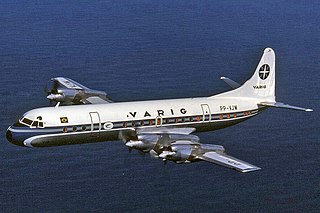
The Lockheed L-188 Electra is an American turboprop airliner built by Lockheed. First flown in 1957, it was the first large turboprop airliner built in the United States. Initial sales were good, but after two fatal crashes that led to expensive modifications to fix a design defect, no more were ordered. With its unique high power-to-weight ratio, huge propellers and very short wings, large Fowler flaps which significantly increased effective wing area when extended, and four-engined design, the airplane had airfield performance capabilities unmatched by many jet transport aircraft even today—particularly on short runways and high field elevations. Jet airliners soon supplanted turboprops for many purposes, and many Electras were modified as freighters. Some Electras are still being used in various roles into the 21st century. The airframe was also used as the basis for the Lockheed P-3 Orion maritime patrol aircraft.

Pan Am Flight 759 was a regularly scheduled domestic passenger flight from Miami to San Diego, with en route stops in New Orleans and Las Vegas. On July 9, 1982, the Boeing 727 flying this route crashed in the New Orleans suburb of Kenner after being forced down by a microburst shortly after takeoff. All 145 on board and 8 people on the ground were killed. The crash had the highest number of aviation fatalities in 1982.

Eastern Air Lines Flight 66 was a regularly scheduled flight from New Orleans to New York City that crashed on June 24, 1975 while on approach to New York's John F. Kennedy International Airport, killing 113 of the 124 people on board. The crash was determined to be caused by wind shear caused by a microburst, but the failure of the airport and the flight crew to recognize the severe weather hazard was also a contributing factor.
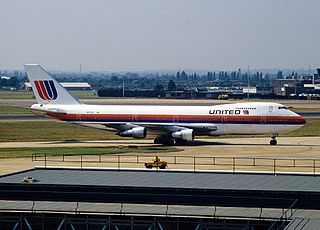
On December 28, 1997, United Airlines Flight 826 was operated by a Boeing 747-100 flying from New Tokyo Airport, Japan to Honolulu International Airport, Hawaii. Two hours into the flight, at an altitude of 31,000 feet, the plane received reports of severe clear-air turbulence in the area and the seat belt sign was turned on. Moments later, the aircraft suddenly dropped around 100 feet (30 m), seriously injuring 15 passengers and 3 crew members. The plane turned around and landed safely back in Tokyo, but one passenger, a 32-year-old Japanese woman, died.

American Airlines Flight 1572 was a flight from Chicago O'Hare International Airport to Bradley International Airport on November 12, 1995. The McDonnell Douglas MD-83 struck trees and an instrument landing system (ILS) antenna during landing, causing $9 million in damage to the aircraft.
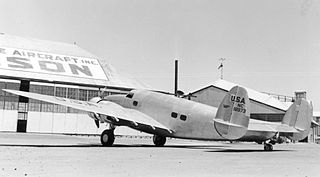
Northwest Airlines Flight 2 was a Lockheed Super Electra aircraft, registration NC17388, which crashed into the Bridger Mountains about 12 miles (19 km) northeast of Bozeman, Montana, on January 10, 1938. All ten on board were killed in the accident, which was the first fatal crash of a Northwest Airlines aircraft or a Lockheed Super Electra.

Braniff Airways Flight 250 crashed near Falls City, Nebraska, on August 6, 1966, en route to Omaha from Kansas City, Missouri. Thirty-eight passengers and four crew members were killed in the crash, which occurred in a farm field late on a Saturday night. In-flight structural failure due to extreme turbulence in an avoidable weather hazard was cited as the cause.

Southern Airways Flight 242 was a DC-9-31 jet, registered N1335U, that executed a forced landing on Georgia State Route 381 in New Hope, Paulding County, Georgia, United States, after suffering hail damage and losing thrust on both engines in a severe thunderstorm on April 4, 1977.

Mohawk Airlines Flight 411, a Fairchild FH-227B twin-engine turboprop, registered N7811M, was a scheduled domestic passenger service operated by Mohawk Airlines, between Albany and Glens Falls, New York. On November 19, 1969, it crashed into Pilot Knob Mountain, killing all 14 passengers and crew on board.
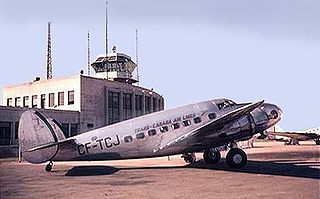
Northwest Airlines Flight 1, registration NC17389, was a Lockheed 14H Super Electra aircraft which crashed approximately ½ mile southwest of the Miles City, Montana airport on January 13, 1939. All four on board were killed in the accident.
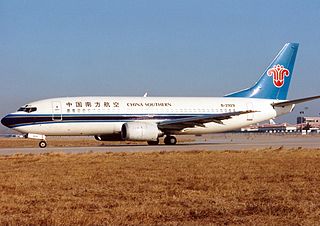
China Southern Airlines Flight 3456 (CZ3456/CSN3456) was a scheduled domestic passenger flight from Chongqing Jiangbei International Airport to Shenzhen Huangtian Airport. On May 8, 1997, the Boeing 737 performing this route crashed during the second attempt to land in a thunderstorm. The flight number 3456 is still used by China Southern and for the Chongqing-Shenzhen route but now with the Airbus A320 family or Boeing 737 Next Generation aircraft.

Braniff International Airways Flight 542, a Lockheed L-188 Electra, registration N9705C, was a scheduled domestic flight from Houston, Texas, bound for New York with scheduled stops in Dallas and Washington, D.C. On September 29, 1959, 23 minutes into the 41-minute flight from Houston to Dallas Love Field, the aircraft disintegrated in mid-air approximately 3.8 miles (6.1 km) southeast of Buffalo, Texas, killing everyone on board.

Swiss International Air Lines Flight 850 was an international scheduled passenger flight from Basle, Switzerland, to Hamburg, Germany. On 10 July 2002, the flight was unable to land at Fuhlsbüttel Airport due to weather. Attempts were made to divert to other airports at Berlin and Eberswalde before the crew decided to land at Werneuchen. On landing, the aircraft struck an earth bank which ripped off all three undercarriage legs, and came to rest on its belly with an engine on fire. One of the sixteen passengers suffered minor injuries. The aircraft was written off.

Ozark Air Lines Flight 809 was a regularly scheduled flight from Nashville, Tennessee, to St. Louis, Missouri, with four intermediate stops. On July 23, 1973, while landing at St. Louis International Airport, it crashed, killing 38 of the 44 persons aboard. A severe downdraft, associated with a nearby thunderstorm, was cited as the cause.

On May 30, 1972, Delta Air Lines Flight 9570 crashed while attempting to land at the Greater Southwest International Airport (GSW) in Fort Worth, Texas during a training flight. All four occupants aboard the training flight were killed. The crash was determined to be caused by the aircraft flying through wake turbulence, and led to sweeping changes in procedures for maintaining minimum safe distance behind aircraft that generate substantial wake turbulence.

Air Manila Flight 702 was an unscheduled passenger flight from Naval Air Station Agana in Guam to Ninoy Aquino International Airport in Manila, carrying 33 passengers and 12 crew members; most of whom were personnel from the base. The Lockheed L-188A Electra attempted takeoff from runway 6L but crashed near a residential area; the crash was caused by retracting the flaps at an altitude too low to clear the terrain after the propeller of engine number three feathered. All 45 people on board and one person on the ground perished in the crash. The investigation concluded that the pilot should have followed company policy by aborting takeoff in the event of an engine failure before reaching VR (takeoff) speed.



















